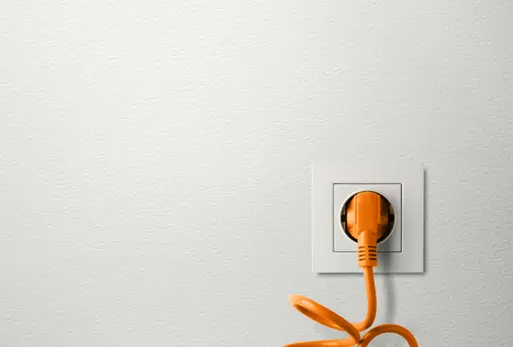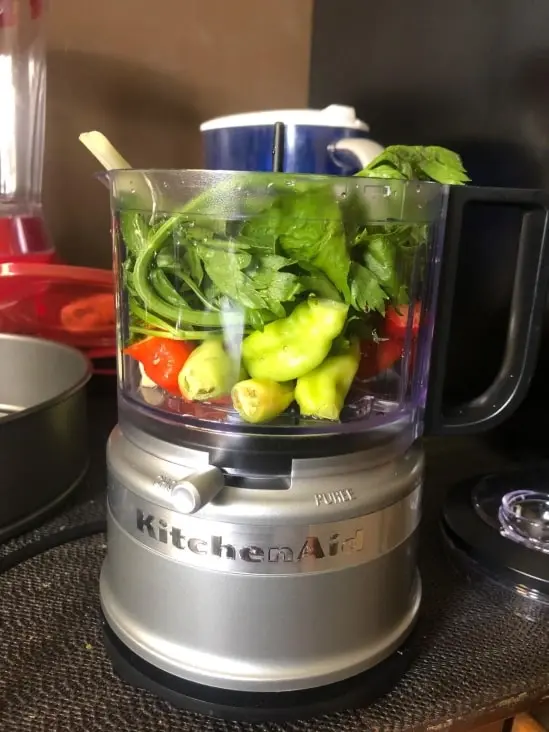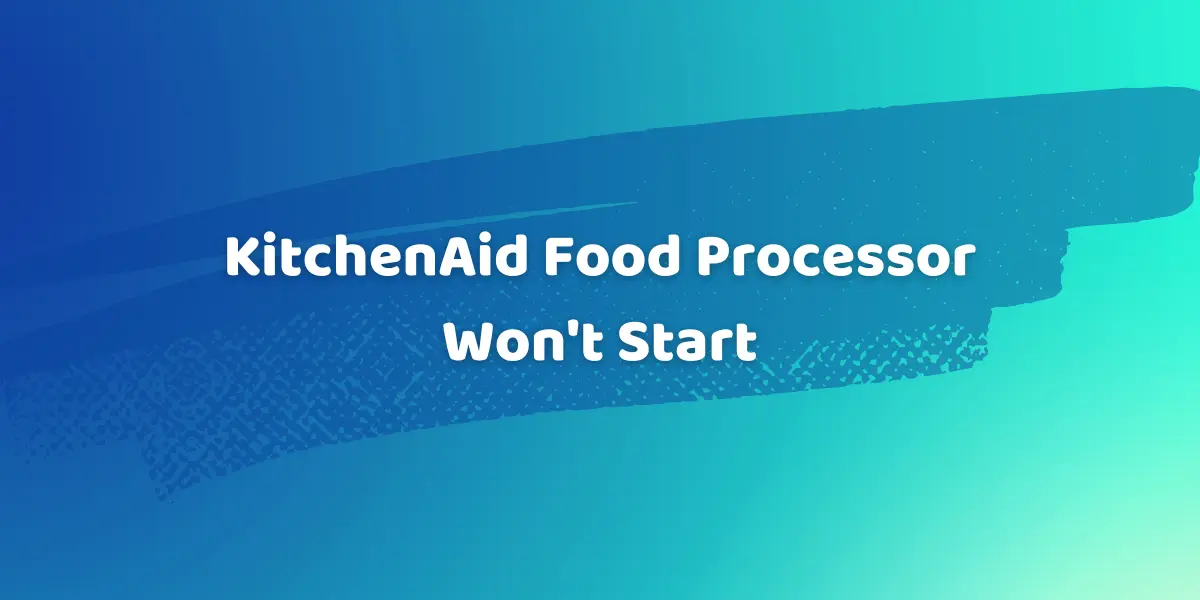Kitchenaid has a good reputation for making high-quality kitchen appliances. The company has been around for quite a while, and customers prefer to use its appliances. But sometimes, even its appliances will also stop working.
A KitchenAid food processor is quite a handy device to have in your kitchen. It easily grinds, chops, and mixes ingredients and saves time.
In this guide, we talk about why the KitchenAid food processor won’t start and how you can fix it effectively. It won’t start because either its power outlet is faulty, or its parts are not assembled correctly broken blade, or anything else. Most issues are simple to fix. Let’s start troubleshooting.

On Sale
Kitchenaid Food Processor – Easy to Use with a one-click (Best Rated)
Twist-free bowl assembly with a latched lid for easy setup, Easy to clean, sealed, leak-resistant work bowl; dishwasher-safe bowl, lid & accessories
KitchenAid Food Processor Won’t Start Troubleshooting
The most common problem people faucet with the KitchenAid food processor is it doesn’t start. A KitchenAid food processor is built with different components and if one of them doesn’t work, it won’t start. So, read on for some useful troubleshooting tips to turn on the KitchenAid food processor.
1. Power Cable Is Not Plugged In

If the KitchenAid food processor is not getting started, the first thing you should check is whether its power cable is plugged in or not. It looks simple but people ignore this step of checking the power cable.
When we plug the power cable maybe it is not plugged in properly or it is loose. A loose power cable won’t transfer electricity to the food processor and without electricity, the food processor won’t start. Check whether the power cable is inserted properly or not.
2. Faulty Power Outlet Or Damaged Power Cable

If the power cable is plugged in all the way, then maybe the power outlet plug is faulty. In this case, plug the food processor power cable into a different outlet. If the food processor starts to mean your power outlet is faulty and you need to replace it.
To check the damaged power cable, plug any other kitchen appliance into the same power outlet, and the appliance starts, which means there may be a problem with the power cable of the food processor.
3. Food Processor Parts Aren’t Assembled Correctly

If food processor parts aren’t assembled correctly, they won’t start even if it is plugged in properly. Brands use safety precautions to ensure people won’t get any injury while they use the food processor.
Due to safety standards, the food processor won’t turn on, if its parts are not assembled in the correct position. Its safety mechanism will cause the machine to not turn on to avoid any accidents.
So, how to assemble KitchenAid food processor parts correctly.
- First, check the bowl position. When you put the bowl in its place and turn it to tighten it, you would hear a clicking sound. If this sound doesn’t come means the bowl is not placed properly.
- Now, put the blade into the bowl. Rotate the blade with your hand to make sure it is rotating all the way. When you touch the blade make sure the power of the food processor is off otherwise it will cause injury.
- Now, place the lid on the bowl. The lid should be closed properly. There would be an arrow or other markings to line up the lid on the bowl to fit it into place.
- At last, install the guard properly. A guard is a major safety mechanism and the KitchenAid food processor won’t start if its guard is not installed properly.
4. Overheated Motor
If your KitchenAid food processor suddenly stops working, it may be due to an overheated motor. When you use the food processor for a longer time, its motor gets overheated.
In this situation, its motor automatically turns off. In the KitchenAid food processor, there is a safety feature that turns off the machine, if it is overheated. You need to wait to get it to cool down, so you can again start using it.
5. Broken or Jammed Blade
You have assembled all parts of the food processor properly, it starts but doesn’t do anything, then there may be an issue with its blade.
You turn on the food processor, and its motor runs but the blade doesn’t move, which means either the blades are jammed or broken. In this situation, you can hear the sound of the motor but the blades won’t run. Sometimes a large piece of ingredients gets stuck between blades and jammed them.
When you remove the ingredients particles from the blades, it starts rotating. But make sure the food processor plug is not on or completely unplug it.
If your food processor is old, possibly its blades may be damaged. Its blades cut hard ingredients regularly. So, with time they become weak, and at last, they crack. Remove blades and check their condition, if they are damaged, replace them with a new ones.
6. Faulty Motor
To rotate blades, a food processor gets power from its motor. The motor is placed inside the food processor and the bowl is attached to the motor. Sometimes there may be an issue with the motor. The motor is not visible from the outside so we don’t think about the faulty motor.
If you think the motor may be damaged or faulty, you should replace it. You can read the instruction guide to replace the motor. If you are not sure how to do it, call an expert to repair or replace its motor.
7. Bowl Is Filled More Than Its Capacity
The bowl of a food processor has its capacity. When you fill it more than its capacity, it puts more pressure on its motor. The motor won’t rotate due to heavy pressure.
You turn on the switch and after a few seconds, its motor stops rotating or you would hear the sound of the motor like it is stuck.
People make this mistake. They want to complete the work quickly. They fill the bowl more than capacity and the result is food processor won’t work. Remove ingredients from the bowl and fill it only up to ¾ part of the bowl to get better performance.
8. Large Size Food

Food processor blades are not built to process large-size food pieces. If you don’t cut food pieces or ingredients into small parts, they will be stuck between blades and make them chop. It will make extra pressure on the motor and maybe the motor gets damaged. Cut food properly into small pieces. If you have a Cuisinart food processor, check this – Cuisinart food processor not turning on.
Where Is the Reset Button on KitchenAid Food Processor?
Every KitchenAid food processor has a reset button. By resetting the food processor, you can fix its functionality.
On the KitchenAid food processor, the reset button is located either at the bottom or lower back side.
To reset it, turn off the food processor if it is in running mode. Wait for a few minutes so the motor will be cooled down. Now press the reset button for 3-5 seconds to reset the machine. If any part or motor is not damaged or there is no mechanical issue.
The KitchenAid Food Processor Attachment is Not Running
If your KitchenAid food processor attachment is not running, it is not going to chop, grind, or dough kneed.
First, you need to identify which attachment of the food processor is not running.
Start with its power cable and power outlet. If both are ok move to its blades. Before checking the blade, unplug the power cable of the food processor.
Now try to rotate the blade with your hand. If blades rotate means the issue is with the motor. Also, check the condition of the blade are they broken or damaged? If yes, change the blade. Any faulty attachment of the food processor will stop it from running.
Will a Kitchen Food Processor Run If Its Bowl Is Cracked?
A food processor bowl is made of plastic and with time it will crack. If you are using a cracked bowl, it may damage the motor of the food processor. An old bowl easily cracks when you don’t wash or store it carefully.
A KitchenAid food processor will work with a crack bowl but it is not a good idea to use a crack bowl. Juice or liquid leaks out from the crack bowl and goes into the motor and damages its electrical circuit. If you see cracks in the bowl, you should replace it.

On Sale
Kitchenaid Food Processor – Easy to Use with a one-click (Best Rated)
Twist-free bowl assembly with a latched lid for easy setup, Easy to clean, sealed, leak-resistant work bowl; dishwasher-safe bowl, lid & accessories
Rust In Food Processor
Rust in the food processor is not common. If you process more liquid food in the food processor, its blades will get rusty. Rust is not good for the food processor and your health.
Food processor blades are made of metal. Metal blades catch rust easily if it is not coated with rust-free polish. KitchenAid food processor blades are built with rust-free material but as it gets old their rust-proof polish becomes less powerful.
Rusted blades won’t work properly and they will also damage the motor. This could overwork the motor and make it overheat. You should change as soon as you see rusted blades.
Recommended By BeautifulKitchenguide's Team
Amazon Must Have Kitchen Gadgets To Save Time Check List
Best Kitchen Faucets of 2025: Sleek, Durable & Worth Every PennyCheck Our Review
The Ultimate Guide to the Best Coffee Makers for Every Budget Check Our Review


